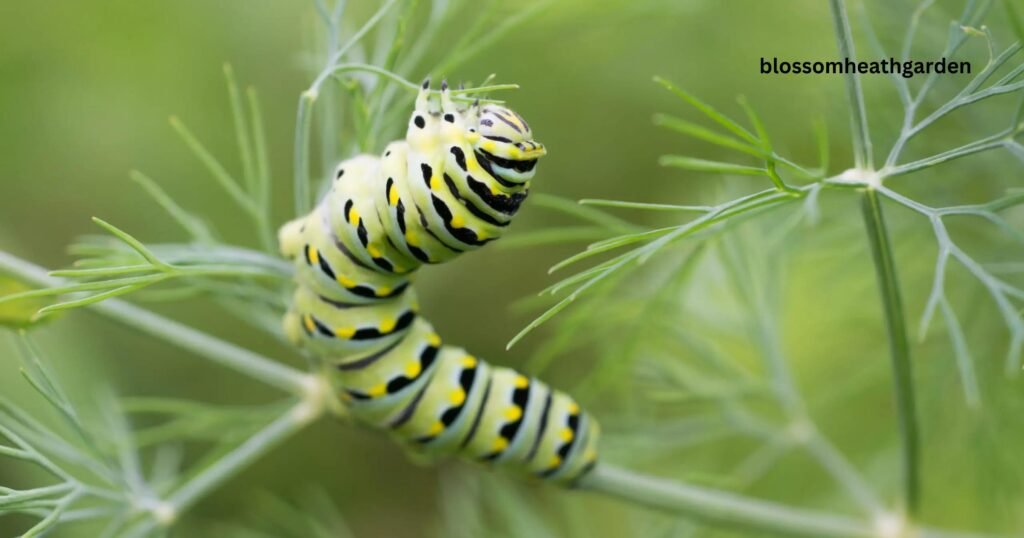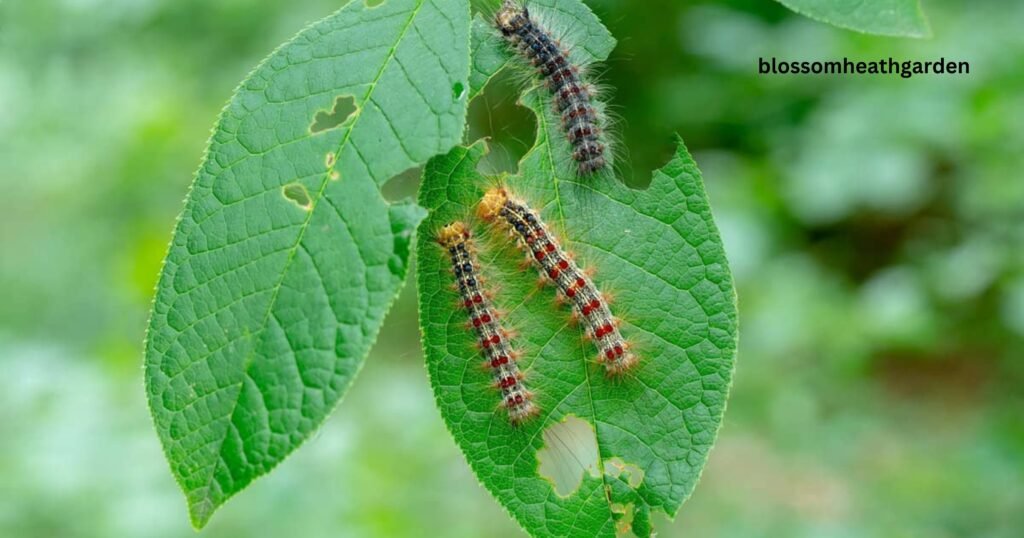A DIY soapy spray is not generally effective on larger insects such as caterpillars or beetles. One of the most natural and inexpensive ways to rid your plants of these pesky bugs is to spray them with hot, soapy water.
Caterpillars, the larval stage of butterflies and moths, can be both fascinating and destructive. While they play a crucial role in the ecosystem as herbivores and pollinators, they can also pose a significant threat to gardens and crops when their populations grow out of control.
Gardeners and farmers often seek methods to manage caterpillar infestations, and one commonly discussed option is the use of soapy water. This article explores the effectiveness of soapy water as a means of controlling caterpillar populations, delving into the science behind it, the application methods, potential risks, and alternative approaches.
Understanding Caterpillar Infestations
Before diving into the specifics of soapy water as a control method, it’s important to understand the nature of caterpillar infestations. Caterpillars are voracious herbivores that can rapidly consume foliage, leading to defoliation and crop damage. Some of the most common caterpillar pests include the cabbage looper, tomato hornworm, and armyworm. Their presence in gardens and fields can be detrimental to plant health and yield.

Soapy Water: A Simple Solution?
Soapy water, an everyday household item, has been touted as a simple, cost-effective solution for managing caterpillar infestations.
The principle behind this method is that the soap in the water breaks down the protective layer on the caterpillar’s skin, causing it to dehydrate and die.
A mixture of mild dish soap and water can be sprayed directly onto plants affected by caterpillars.
While this method is generally safe for most plants, it’s recommended to do a small test before wide-scale application to ensure that the soap does not damage the plant.
Despite its apparent simplicity and accessibility, the effectiveness of soapy water varies, and it may not be the best solution for severe or recurring infestations.
The Science Behind Soapy Water
Soapy water, often referred to as insecticidal soap, is a widely used and relatively safe method for controlling various garden pests, including caterpillars.
The effectiveness of soapy water against caterpillars lies in its ability to disrupt their protective cuticle and interfere with their respiratory systems.
The main points to consider regarding the science of soapy water as an insecticide are as follows:
- Disruption of the Cuticle: Caterpillars have a protective waxy cuticle on their bodies that helps retain moisture and protect them from environmental threats. Soap molecules in soapy water can break down this cuticle, causing it to lose its protective properties. This leaves the caterpillars vulnerable to desiccation and external threats.
- Disruption of Respiration: Insecticidal soap can also interfere with caterpillar respiration. The soap penetrates the spiracles, which are small openings on the caterpillar’s body through which it breathes. This interference disrupts the oxygen exchange, leading to suffocation and, ultimately, the death of the caterpillar.

Application Methods for Soapy Water
To effectively use soapy water as a caterpillar control method, it’s essential to apply it correctly.
Various application methods can be employed, depending on the extent of the infestation and the specific caterpillar species you are dealing with.
The main points to consider regarding the application of soapy water are as follows:
- Dilution Ratios: The concentration of soap in the water is critical. A common recommendation is to mix 1-2 tablespoons of mild liquid dish soap per gallon of water. Using too much soap can harm plants, while too little may not effectively control caterpillars.
- Spraying Technique: Use a spray bottle or garden sprayer to distribute the soapy water over the affected plants evenly. Be sure to cover both the upper and lower surfaces of leaves, as caterpillars often feed on the undersides.
- Timing: Apply the soapy water in the early morning or late afternoon when caterpillars are most active. This allows for better contact and absorption of the solution.
- Repeat Applications: For severe infestations, multiple applications may be necessary. Monitor the plants regularly and reapply the soapy water as needed.
Potential Risks and Considerations
While soapy water is generally considered safe for controlling caterpillars, there are some potential risks and considerations to be aware of:
- Plant Sensitivity: Some plant species may be more sensitive to the soap solution than others. Before applying soapy water to an entire plant or garden, test it on a small area to ensure it doesn’t cause damage.
- Impact on Beneficial Insects: Soapy water is not selective and can harm beneficial insects like ladybugs and lacewings, which help control caterpillar populations naturally. Exercise caution to avoid collateral damage to these helpful allies.
- Residue: Soap residue left on plants can affect their appearance and may need to be rinsed off if it becomes unsightly. However, in most cases, it doesn’t harm the plant’s overall health.
- Effectiveness: The efficacy of soapy water may vary depending on caterpillar species, age, and the extent of the infestation. It may only provide complete control in some situations.
Alternative Approaches to Caterpillar Control
While soapy water can be an effective caterpillar control method, it’s not the only option available. Here are some alternative approaches to consider:
- Biological Control: Encourage natural predators of caterpillars, such as birds, parasitic wasps, and beneficial insects like ladybugs and lacewings, to inhabit your garden or field. These natural predators can help keep caterpillar populations in check.
- Physical Barriers: Use physical barriers like row covers or netting to protect plants from caterpillar infestations. This method is particularly useful for safeguarding crops.
- Handpicking: For small-scale infestations, consider handpicking caterpillars from plants. Wear gloves and inspect plants regularly to remove and relocate caterpillars away from your garden.
- Biological Insecticides: Some biological insecticides, such as Bacillus thuringiensis (Bt), are specific to caterpillars and are less harmful to beneficial insects. These can be an effective option for targeted caterpillar control.
- Plant Selection: Choose caterpillar-resistant plant varieties for your garden whenever possible. These plants have natural defenses that make them less appealing to caterpillars.
- Crop Rotation: Crop rotation can help break the life cycle of caterpillars and other pests. By changing which plants are grown in a particular area each year, you can help prevent the buildup of caterpillar populations and reduce the likelihood of major infestations.
Conclusion
Does Soapy Water Kill Caterpillars? Soapy water can be a valuable tool in controlling caterpillar infestations in gardens and fields. Its effectiveness lies in disrupting the caterpillars’ protective cuticle and respiratory system, ultimately leading to their demise. When applying soapy water, it’s crucial to consider dilution ratios, spraying techniques, timing, and the need for repeat applications. However, it’s essential to exercise caution to avoid harming beneficial insects and monitor for potential plant sensitivity. While soapy water is a viable option, there are alternative approaches to caterpillar control, including biological control, physical barriers, handpicking, biological insecticides, and plant selection. The choice of method should be based on the severity of the infestation, the specific caterpillar species involved, and your overall gardening or farming goals. By carefully considering these factors, you can effectively manage caterpillar populations and protect your plants from damage while maintaining a healthy garden or field ecosystem.
FAQs
Does dish soap work on caterpillars?
Yes, dish soap mixed with water can be an effective method for controlling caterpillars. The soap solution disrupts the protective cuticle, causing the caterpillar to suffocate. However, care should be taken with the soap concentration, as too much can harm plants. It’s also important to remember that the solution can affect beneficial insects, too.
What kills caterpillars the most?
Several methods can effectively eradicate caterpillars. Biological insecticides, like Bacillus thuringiensis (Bt), specifically target caterpillars, causing minimal harm to beneficial insects. Natural predators such as birds and parasitic wasps also play a significant role in controlling caterpillar populations. Lastly, soapy water can be a valuable home remedy, disrupting the caterpillars’ respiratory system and leading to their demise.
Will baking soda kill caterpillars?
While there are claims that baking soda can kill caterpillars, it’s not a scientifically proven or widely recommended method. The efficacy of baking soda as a pesticide is largely anecdotal, and its effectiveness may vary across different species of caterpillars. It’s best to rely on proven control methods such as biological controls, handpicking, and biological insecticides.
What bugs does soapy water kill?
Soapy water is particularly effective at killing soft-bodied insects like aphids, mites, and whiteflies, which can damage plants. The soapy mixture covers the insects and suffocates them by blocking their respiratory system. However, it’s essential to use this remedy judiciously as it can also harm beneficial insects.

